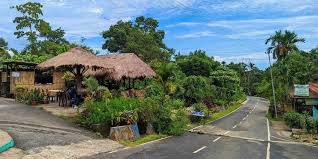Mawlynnong, a picturesque village located in the East Khasi Hills district of Meghalaya, is widely regarded as Asia’s cleanest village. With its pristine surroundings, immaculate streets, and lush greenery, Mawlynnong is not just a visual treat, but a testament to the importance of environmental consciousness and community-driven cleanliness efforts. Often referred to as the “cleanest village in Asia,” Mawlynnong has garnered global attention for its dedication to maintaining a clean and sustainable environment while preserving its rich cultural heritage.
Mawlynnong Village: A Unique Community
Mawlynnong is a small village nestled in the hills of Meghalaya, home to around 500 people from the Khasi tribe, one of the indigenous communities of the region. Despite its small size, Mawlynnong has become a significant point of interest for travelers, environmental enthusiasts, and researchers due to its remarkable cleanliness, sustainable practices, and close-knit community.
The villagers of Mawlynnong take immense pride in keeping their surroundings clean and maintaining the environment. The village is a model of sustainable living, with a deep-rooted commitment to protecting nature and promoting eco-friendly practices. From the use of traditional bamboo dustbins to natural waste segregation and disposal methods, the people of Mawlynnong have set an example for the rest of the world in eco-tourism and sustainability.
Mawlynnong: The Cleanest Village in Asia
Mawlynnong gained international recognition when it was awarded the title of Asia’s Cleanest Village by Discover India Magazine in 2003. The village’s cleanliness is evident from the moment you step foot into it. There are no visible plastic waste, litter, or any form of pollution on the streets. The villagers take an active role in ensuring cleanliness, with every household responsible for maintaining its surroundings.
One of the remarkable practices that contribute to Mawlynnong’s cleanliness is the community’s waste management system. The villagers segregate waste into biodegradable and non-biodegradable categories, and the biodegradable waste is composted, while non-biodegradable waste is carefully collected and disposed of in a sustainable manner. This method not only reduces waste accumulation but also contributes to maintaining the village’s natural beauty.
The paths leading to the village are lined with beautifully swept streets, neat gardens, and flowering plants, creating an aesthetically pleasing and environmentally conscious atmosphere. The fact that Mawlynnong’s cleanliness is maintained without the use of modern waste management technology speaks volumes about the community’s dedication to preserving nature and protecting their surroundings.
Mawlynnong Village Tourism: What to Expect
Mawlynnong is rapidly becoming a popular tourist destination, drawing visitors from across the globe who are keen to experience its unspoiled beauty, the warmth of its people, and its exceptional cleanliness. The village offers several attractions and activities for visitors, making it an ideal getaway for those looking to explore the natural beauty of Meghalaya and learn about sustainable living practices.
1. Clean and Green Surroundings
The primary attraction of Mawlynnong is its cleanliness, which creates a unique atmosphere of calm and tranquility. The village’s well-maintained gardens, neat streets, and well-preserved natural surroundings are perfect for leisurely walks and photography. Visitors are often amazed at how every corner of the village is impeccably clean, from the well-kept houses to the litter-less streets.
2. Living Root Bridges
In addition to its clean environment, Mawlynnong is home to the iconic living root bridges—a marvel of nature and traditional craftsmanship. The villagers have been cultivating these root bridges for centuries, using the roots of rubber trees to create intricate, natural bridges that stretch across streams and rivers. These living root bridges are not only a testament to the ingenuity of the Khasi tribe but also serve as a unique attraction for tourists visiting the village.
One of the most famous living root bridges near Mawlynnong is the Riwai Root Bridge, located just a short distance from the village. The trek to this bridge takes visitors through beautiful, untouched forests, providing an opportunity to witness the region’s natural beauty up close.
3. Mawlynnong Viewpoint
Another popular spot in the village is the Mawlynnong Viewpoint, which offers a panoramic view of the surrounding landscape, including the Bangladesh plains in the distance. The viewpoint is located on a tall bamboo tower that offers stunning vistas of the rolling hills, lush forests, and sprawling greenery. It is a perfect spot for photography and to experience the beauty of the region in all its glory.
4. The Clean Village Tradition
While in Mawlynnong, visitors can also learn about the village’s practices in cleanliness and sustainability. The locals are always happy to share their knowledge of eco-friendly living, from waste segregation techniques to the use of bamboo dustbins. There are also local tours that explain how the villagers have successfully maintained their clean environment and why it has become such an important part of their way of life.
5. Cultural Experiences
Mawlynnong offers a chance to experience the local culture and hospitality of the Khasi people. The village is home to some traditional Khasi homes, where visitors can experience local customs, taste traditional Khasi food, and even stay in homestays that offer an authentic experience of village life. The villagers’ warmth and hospitality provide a unique and enriching cultural experience that makes the trip memorable.
Mawlynnong Village History: A Testament to Resilience and Tradition
Mawlynnong’s history is deeply rooted in the Khasi tribe’s rich cultural heritage. The Khasi people have a long history of living in harmony with nature and have always practiced sustainable agricultural methods and forest conservation. For centuries, they have lived in isolation, cultivating their land and maintaining a close relationship with the environment.
Mawlynnong, like many other villages in Meghalaya, follows a matrilineal system, where lineage is traced through the mother. This unique social structure has contributed to the strong sense of community that exists in Mawlynnong today. Women in the village play a pivotal role in decision-making processes, including the management of resources, which has led to a more organized and sustainable approach to village life.
In the past, Mawlynnong was a quiet, remote village with little interaction with the outside world. However, with the rise of eco-tourism, the village has gained attention for its practices in environmental conservation and cleanliness. Despite the increasing number of tourists, Mawlynnong has maintained its identity and continues to promote a sustainable and eco-friendly way of life.
How to Reach Mawlynnong Village
Mawlynnong is located approximately 90 kilometers from Shillong, the capital city of Meghalaya, and about 250 kilometers from Guwahati in Assam. The village is well-connected by road, and the journey itself offers stunning views of the hills and valleys of Meghalaya.
By Road
The most common way to reach Mawlynnong is by road. From Shillong, you can hire a taxi or take a local bus to Mawlynnong. The journey takes around 3 to 4 hours. The roads are in decent condition, and the drive through the winding hills is scenic, offering glimpses of the lush landscapes of Meghalaya.
By Air
The nearest airport to Mawlynnong is Lokpriya Gopinath Bordoloi International Airport in Guwahati. From the airport, you can hire a taxi to reach Shillong, and then continue the journey to Mawlynnong. The Shillong Airport also provides domestic flights, though it is smaller in comparison.
By Train
The nearest railway station to Mawlynnong is Guwahati Railway Station, which is well-connected to other parts of India. From there, you can take a taxi or bus to Shillong and then continue to Mawlynnong by road.
Conclusion
Mawlynnong Village is a shining example of how small communities can make a big impact in preserving the environment and promoting sustainable living. Its title as Asia’s cleanest village is well-deserved, as the villagers have adopted a unique approach to cleanliness, community management, and eco-tourism. With its lush greenery, pristine streets, and cultural richness, Mawlynnong is not only a peaceful getaway but also a source of inspiration for the rest of the world. If you’re looking for a place that combines natural beauty, cultural authenticity, and environmental consciousness, Mawlynnong should definitely be on your travel list.



